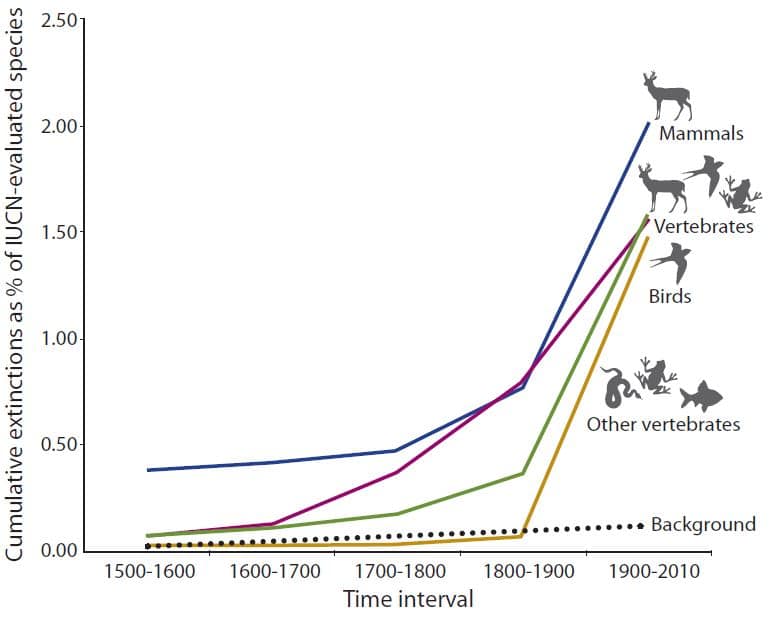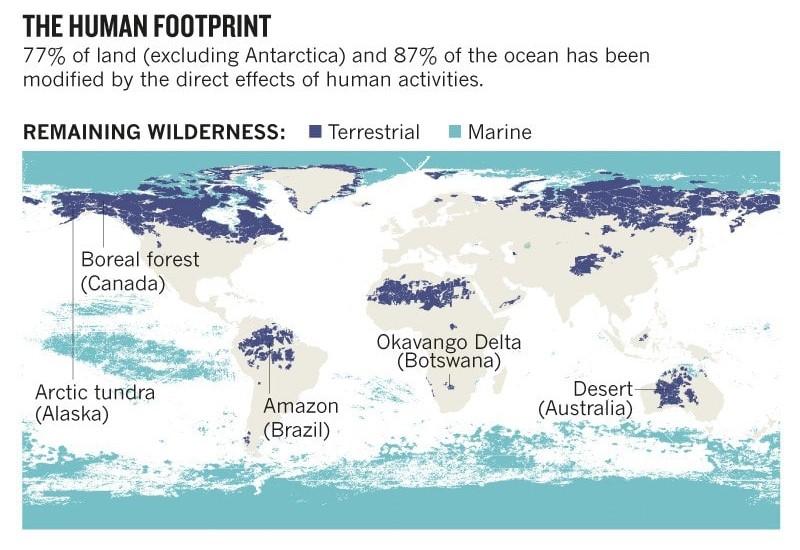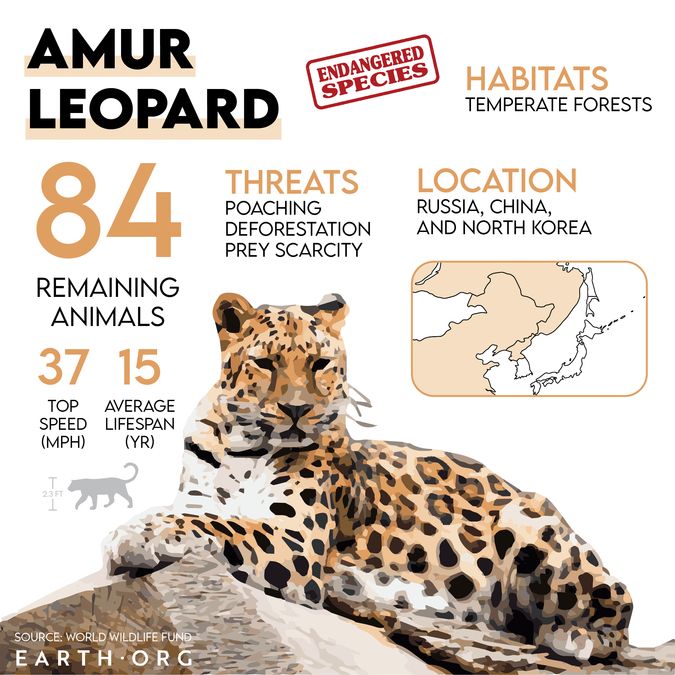A growing body of literature supports the hypothesis that we may be in the early days of the 6th mass extinction. Habitat encroachment is worse than ever, and there is no sign of its relent, yet without nature, humanity cannot survive.
Earth.Org takes a closer look.
—
A landmark report, published in 2019 by the Intergovernmental Science-Policy Platform on Biodiversity and Ecosystem Services (IPBES), declared 1 (out of ~8.7) million species to be facing extinction within the next few decades. Food production is largely to blame as it is the main driver behind our reshaping of 75% of land and 66% of oceanic area.
What really worries scientists is the extinction rate. There is a base extinction rate that has somewhat fluctuated over the ages, but is around 0.1 to 1 extinction per million species per year. A 2015 study found that current extinction rates are 10 to 100 times higher than the background rate, and these are highly conservative to conservative estimates respectively.

Extinction rates over time based on the IUCN Red List Database. Source: Ceballos et al. 2015.
Even if extinction rates plateaued where they are now, nearly 4 million species would disappear in the next 2 million years. If that seems like too long to be relevant, remember that past mass extinctions took 60,000 to 20 million years to wipe out between 75% and 90% of all species on Earth.
Plus, there is no reason to believe extinction rates won’t keep rising. Habitat encroachment may have slowed but it is still going strong (think Amazon deforestation), and climate change is set to exacerbate the situation to a point where even humans will find things difficult.

Map of the remaining untouched wilderness, 75% of which is found in just 5 countries. Source: EM Watson 2018, Nature article.
Considering we’ve lost 900 species in the last 500 years, and the extinction rate only recently accelerated, it is likely that we’re witnessing the beginning of the 6th mass extinction. Some notable species facing extinction now are the Javan rhino, the giant Pangasius or the Amur Leopard.

An important factor described in Ceballos, Ehrlich and Raven’s 2020 research article is that “extinction breeds extinction”. Because most ecosystems are complex webs of interdependent lifeforms all providing important services to one another, any of these disappearing makes survival more difficult for others.
So, where does that leave us?
Professor Paul Ehrlich of Stanford University says that more species should be listed as endangered, namely all those with populations under 5000 (currently at 2500). He also says that a global comprehensive binding agreement requiring parties to address the extinction crisis is a necessity, as a starting point if nothing else.
Mark Wright, the director of science at WWF, says, “The numbers in this research are shocking. However, there is still hope. If we stop the land-grabbing and devastating deforestation in countries such as Brazil, we can start to bend the curve in biodiversity loss and climate change. But we need global ambition to do that.”
The comment above only shows how far behind we are on an issue that might soon become irretrievable.
The issue with the environmental problems in the world today is that most of them require thinking beyond our lifetimes, something humans aren’t good at doing. It is likely that the 6th mass extinction won’t really affect you, but rather generations to come, and climate change is similar.
On the flipside, improved education and information access allow us to think more broadly than ever before as a species, therefore giving each an understanding of the stakes.
We are therefore at a critical juncture in time where we can, and must, work for a future we will not witness if we want humankind and our planet to coexist in the long term. We are all part of this planetary organism, but only we as humans have the choice.
This article was written by Owen Mulhern.
You might also like: In Scope: Fast Fashion, the Environment and Climate Change










![The Statistics of Biodiversity Loss [2020 WWF Report]](https://u4d2z7k9.rocketcdn.me/wp-content/uploads/2020/12/lprwinkyTHB-544x306.jpg)





